|
Back in February we wrote a blog post on the 45th anniversary of the first screening of Sir John Betjeman’s “Metro-Land” film. Recently we have been in correspondence with Edward Mirzoeff, who directed “Metro-Land” and many other films with Betjeman. He very kindly offered to answer some questions about the making of the film and working with Betjeman. How did you first meet Sir John? In 1968 the BBC found itself in an exceptionally rare situation - it was awash with cash (because of a big leap in Colour TV licences). Among other things, it decided to hire a helicopter for three years. When the bosses got round to thinking what to do with a helicopter, they came up with a wholly new idea - a thirteen-part documentary series about Britain, to be filmed entirely from the air. Although I was a junior and inexperienced film-maker, I was asked to take charge of the series, which I named Bird's-Eye View. It was immediately clear that films with no sync. sound would require writers - indeed, would take the form of essays. A whole gaggle of potential writers was invited to convene for a seminar at our offices, Kensington House. Among them was John Betjeman, whom I had never met before. Although the most distinguished of the group, he seemed affable and approachable. We immediately got on. After some hesitation, he agreed to sign up as a writer, and in the end wrote the commentaries for three of the programmes, two of which I directed myself. What was he like to work with? Nearly always a delight. He was one of those life-enhancing people who make you think you are witty, sparkling and intelligent - far more so than you really are. He was sensitive and funny, sharply observant (both of people and of buildings), ironic, enthusiastic, warm, and by no means always 'nice'. Absurdly generous - "I'm frightfully rich" he would say in a pub, producing a wad of crumpled notes; it took time to realise that this was Betjemanese, meaning the opposite of what it said (he was haunted by an irrational fear of poverty and "the workhouse", just as he was haunted by doubt, guilt, and fear). There were always drinks and lunches, gifts and treats. Working on location with Sir John was full of surprise. When filming, we would prepare and rehearse his pieces to camera meticulously. But no two takes were ever the same, and improvisation was always a part of his performance. For example, at the Voysey house - if you look carefully you can see that he is carrying a little Beatrix Potter book. The plan was that he would read from The Tale of Mrs Tittlemouse, and compare it to the interior of The Orchard. But then Betjeman was suddenly struck by how deceptively low the interior was, and how he could show this by moving across the hall to stand under a door frame. Which he did, to the cameraman's considerable surprise - and Mrs Tittlemouse was forgotten. He was very gifted at speaking to camera, at making contact through the glass lens with the individual viewer at home, perhaps because of his spontaneity, his sincerity, the unpatronising language he used, and his light-heartedness. But most of our work together was in the cutting room, after the film had been edited, and when he would come in day after day to settle in front of the editing machine, running the sequences forwards and backwards, backwards and forwards, assimilating the rhythm of the editing, before setting pen to paper. He would write on A4 pads, tearing off sheet after sheet of unsatisfactory words, scrunching them up, throwing them on the floor. Most of what he wrote was in verse, often iambic pentameter in blank verse, varied with rhyme when the sequence seemed to call for it. His rhymes were sometimes couplets or quatrains, sometimes more elaborate schemes borrowed from other poets, such as Thomas Hood. It didn't always come easily. Sometimes he would get bogged down. Then he would retire to what he called his "composition cell" - a tea-making and broom cupboard - where he could shut himself off from the noise, chat and phone-calls, and emerge perhaps an hour later brandishing an immaculate piece of verse. Our film editor, Ted Roberts, played a vital part in all this. A wonderful rapport developed between him and John. He could make the poet laugh, creating a jokey atmosphere that relieved the tension of creativity. Sometimes he came up with rhymes or even whole sections of verse in Betjeman's own style. "Oh, that's much better than I could do", Betjeman would say, and, altering just a word or two, he would incorporate Ted's whole suggestion. Sir John loved the cutting-room because he felt part of a closely-knit team, with jokes, laughter, and fun. He himself was sometimes given to depression and self-doubt. On such days he might arrive with his teddy-bear, Archibald Ormsby-Gore, in a carrier bag. "Archie's feeling very gloomy today". "Well, let's cheer him up" the editor would reply, placing the bedraggled old bear on the film rewind machine, where it would spin round as on a merry-go-round. "Oh Archie's much more cheerful now" Sir John would then say, his wonderful smile breaking out, as if the sun had emerged from behind the clouds. How was the idea of “Metro-Land” first conceived? Metro-land was conceived in the upstairs dining room at Wheeler's Restaurant, Old Compton Street, Soho, early in 1971. Three of us were lunching together - John Betjeman, film editor Ted Roberts and I - to celebrate the successful conclusion of the series "Bird's-Eye View". Aerial films consist largely of landscape and countryside (it is difficult to get permission to fly low over built-up areas). Such films may be beautiful to look at, but they are not about the way most people live. Over the fish (Sir John was very fond of oysters) we wondered about making another film together, this time ground based, about towns and cities. Suburbia, we agreed, was where most people wanted to live, although (at that time) the fashionable scoffed and planners derided it. Why not make a film about the delights of urban life, celebrating the unregarded suburbs? Nobody had done that before. By coffee we had even come up with a possible structure (I think this was Betjeman's suggestion). If we followed the course of the Metropolitan Railway from Baker St and St John's Wood out to distant Buckinghamshire, our journey would tell the story of how the suburbs grew and developed. In order to bypass the cumbersome and risky commissioning process at the BBC, I persuaded Sir John to write a personal letter to the Controller of BBC2, Robin Scott. On 9 May 1971 he sent a note pleading for "a film on the beauties of suburbia. It is a rich theme and could be full of praise and stimulation. Most people are suburban and won't admit it. What trim gardens we could show, what shopping arcades, front halls, churches, schools and human-scale paths and bicycle-tracks and open spaces. I see it as a thanksgiving for traffic-free privacy throughout Britain - but not Southern Ireland, which isn't suburban, as is Yours gratefully and ever, John Betjeman". Our devious trick worked. The Controller, charmed by the letter's eccentricity, directly commissioned a 50-minute documentary. Our working title was "The Joys of Urban Living", soon replaced by the snappier "Metro-land". Betjeman suggested that the film should resemble music hall performances of his youth - each item no longer than four minutes, variety and surprise the key-notes, lots of laughter and perhaps a bitter-sweet moment or two along the way. Certainly no interviews. I thought that we would need three anchor-points in the film, significant houses of different periods and styles through which Betjeman could guide us in detail. He suggested Norman Shaw's Grim's Dyke in Harrow Weald, Voysey's small masterpiece The Orchard on Chorleywood, and the modernist High and Over in Amersham. My team and I would find everything else during the research. The script would come after the shooting and editing. What are your memories of the making of “Metro-Land”? It was hard to find anything of interest for us to film in Chorleywood (apart from The Orchard). I went to consult the local historian, and sat, for numbing eternities, as he told of one worthy municipal monument after another. In despair, I got up to leave - and heard him murmuring that he didn't think it was very interesting, but there was a man who had recently installed a cinema organ in his back room... The sequence of Len Rawle and his Mighty Wurlitzer from the Empire, Leicester Square would, we knew, take a whole day to film. But when John Betjeman turned up that morning he announced, to general consternation, that he could spend no more than 45 minutes there. Never one who found it easy to say no, he had somehow agreed to film with us in Chorleywood and also with another team, on the same day, back at his home in Cloth Fair. The cameraman went pale, and muttered about resigning. There was time only to film Sir John arriving at the door, and a couple of shots of him by the Wurlitzer. Then he was off to the station. All the rest of the complicated sequence was shot that day in his absence, with plucky Len Rawle at the console smiling at the stand-in (me) as if Betjeman were there. By the time the editor had finished, you wouldn't have known he wasn't. Sir John felt it was in the spirit of the film to travel to and from filming locations on the Metropolitan Railway. So it was on the day we arranged to film at Moor Park, the imposing early 18th century mansion converted by its last owner, Lord Leverhulme, into a golf club, in 1923. During the war the unhappy Battle of Arnhem was planned here. And here we, too, we suffered a setback. Sir John was to be picked up at the station and driven to the mansion. The crew and I waited on the steps for him to arrive. Time passed. Eventually a Mini drew up, and out of it emerged our distinguished presenter, stormy as a thundercloud. "I know I'm only the artiste, and therefore the least important person in this team, but..." Apparently he had been waiting at one exit, our highly competent researcher at another, and neither had realised that there are two ways out of Moor Park Station. Sir John was not a happy man, and it was no good expecting him to discourse cheerfully about Sir James Thornhill and Giacomo Leone, the plasterwork, murals and trompe-l'oeil ceiling. I thought it might be best to switch the schedule around, and film him trying a drive or two on the golf course first. It might lighten the mood. It didn't. When we got to the tee he was still fuming. Normally a good golfer, he took a massive swing - and missed the ball completely. Turning to camera, his black mood forgotten, he laughed and laughed, the cameraman went on filming, and a memorably joyous accidental moment was captured. Where there any difficulties in the making of the film? Metro-land was a happy film in the shooting and editing - no rows, no disasters. Quite unusual. Perhaps the greatest difficulty came at the very last - the recording of Sir John's commentary. He was the finest reader I have ever known, with his mellifluous voice, perfectly judged intonation, superbly natural rhythm and emphasis. There was no-one like him for reading verse, either his own or other people's. So I was looking forward to recording day. But when I arrived at the studio in Oxford St., the film editor seemed anxious. "Have a word with Sir John", he said, "see if you think he's all right." He wasn't. His speech was slurred and very slow. Had something dreadful happened? We contacted his doctor, who spoke to him on the phone. It emerged that after lying awake for hours worrying about the coming ordeal, he had taken sleeping pills at about 5 a.m. He was not really fully conscious, and the only thing to do was to let him sleep it off. How were we to manage that? By good luck, the studio had a camp bed and a blanket. The Poet Laureate was put to bed, the lights were turned out, and we tip-toed away. I went to see if I could negotiate a lower hourly rate for sleeping than for commentary recording. When we returned several hours later, Betjeman was nowhere to be found. Apparently he had awoken perfectly refreshed, and taken himself off to Wheeler's for a dozen oysters and a glass of bubbly. He re-appeared, wide-awake and in excellent form, to deliver a relaxed and masterly performance. The music is a very distinctive part of “Metro-Land”. How was the music chosen for the soundtrack? Film editor Ted Roberts was particularly gifted at knowing or finding the right music for a sequence he was cutting. He was responsible for matching Tiger Rag with the speeded-up Metropolitan journey at the beginning of the film. Absurdly fast music was hard to find, so he thought of speeding up his own (33rpm) LP of the Temperance Seven by playing it at 45rpm. This produced a suitably manic quality. Ted also chose the Elgar's "Civic Fanfare" at Wembley, to go with archive newsreel of Elgar himself conducting what we think was that very piece. It was also his idea to use the 'Witch of Endor' section from "Le Roi David" by Honegger (a rather obscure work) to match the creepy 'Agapemone' house in St John's Wood. Many recordings of songs of the '20s and '30s were sent to me by the extraordinarily knowledgeable assistants (sadly no longer there, thanks to John Birt) of the BBC Gramophone Library, and from them the editor and I selected the most appropriate and amusing ones, such as "Build A Little Home" by Roy Fox and "Sunny Side of the Street" by Jack Hylton, to counterpoint our 1920s and '30s Metro-land houses . Willie Rushton's little floppy record "They Call It Neasden" came attached to the front of an issue of Private Eye. I had a copy, but the mix was so poor that the words could not be heard properly. I got in touch with Private Eye and found that, by extraordinary good fortune, the original three tracks were still extant; we re-mixed them, in effect re-mastering the record, so that the funny words were now loud and clear. I was rather proud of that. The Harrow School song is the real thing, a private recording Betjeman tracked down and borrowed from an aristocratic Old Harrovian friend. Betjeman believed himself 'an Old Harrovian in all but truth'. The car washing sequence is cut to "Down By The Lazy River" by The Osmonds. It was from the tape of the "Family Favourites" radio programme broadcast at just that time on the very Sunday morning that we filmed the sequence. Once again, the real thing. The music towards the end of the "High and Over" sequence is a song ("Everything I Own") by a contemporary band called Bread. The editor chose it for negative reasons; it seemed grungy and mediocre and mindless, matching the pictures of encroachment by the dreary houses of the new estate. "Good-bye, High hopes and Over confidence - In fact, it's probably good-bye England". Why do you think film has endured so well? This is an impossible question for me to answer. There may be a number of reasons. Betjeman was in good health and on the top of his form at that time, ebullient and entertaining. We had an enjoyable and stimulating relationship together, each bringing out the best in the other. It was a subject he knew and loved, but much of the content that we had found was new and enjoyable to him. He loved the camaraderie of filming, and what he saw as the poetry of film language - Gennies and Blondes and Redheads, Pups and Bashers, Brutes and French Flags, Barn Doors, Baby Legs and Inky-Dinkies... And it was a truly outstanding team - three brilliant researchers, a uniquely sympathetic film crew, the perfect film editor, all feeling involved and creative together. A happy film to make, full of jokes and high spirits, both on the screen and behind the scenes. It was a timely film too. The tide was just beginning to turn against high-rise and brutalism, and the long-derided suburbs seemed fresh and attractive again. Those unexpected period houses - Voysey, Norman Shaw, moderne - all suddenly seemed interesting once more. And with them, an English timelessness too - Watkin's Folly, The Byron Luncheon Club, the Pinner Fair, the Croxley Green Revels... And the format worked - a clear narrative drive, short sequences, surprise, a sense of fun, poetry, beauty, celebration, a mix of old and new - and no interviews! Thank you to Edward Mirzoeff for his thoroughly detailed recollections of filming "Metro-Land" and of Sir John Betjeman.
More information on Sir John Betjeman, and his work and life, can be found at the Betjeman Society website
3 Comments
24/6/2018 08:16:01 am
So fascinating, how TV was even in my own brief (if usually less happy) experience
Reply
John Howard
3/7/2018 01:39:18 pm
Marvellous! Now to watch Metroland on DVD again...
Reply
Martyn M Lewis
10/5/2023 12:17:30 am
Such an enjoyable flmf
Reply
Leave a Reply. |
Archives
May 2024
Categories |
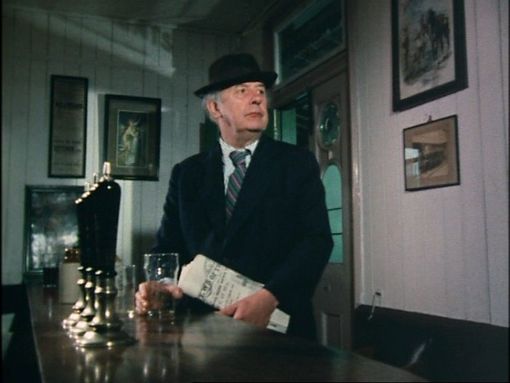
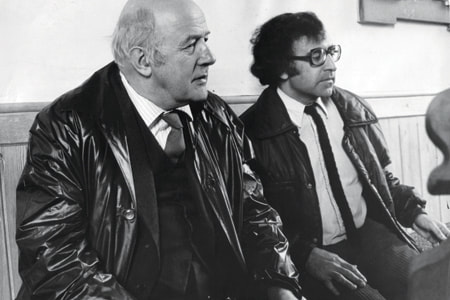
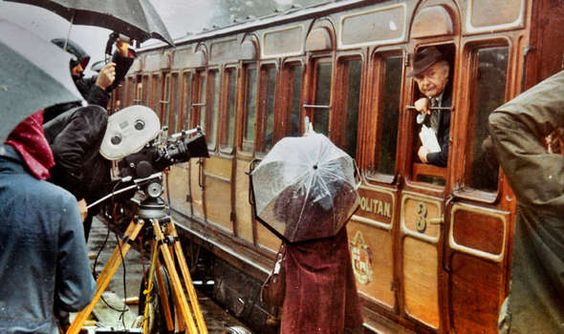
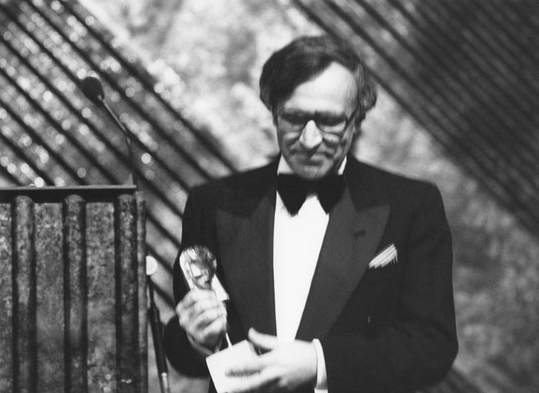
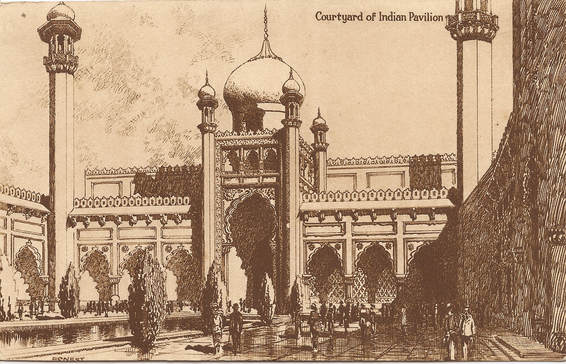
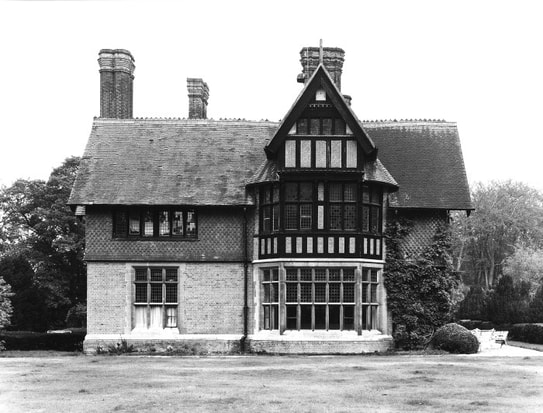
 RSS Feed
RSS Feed